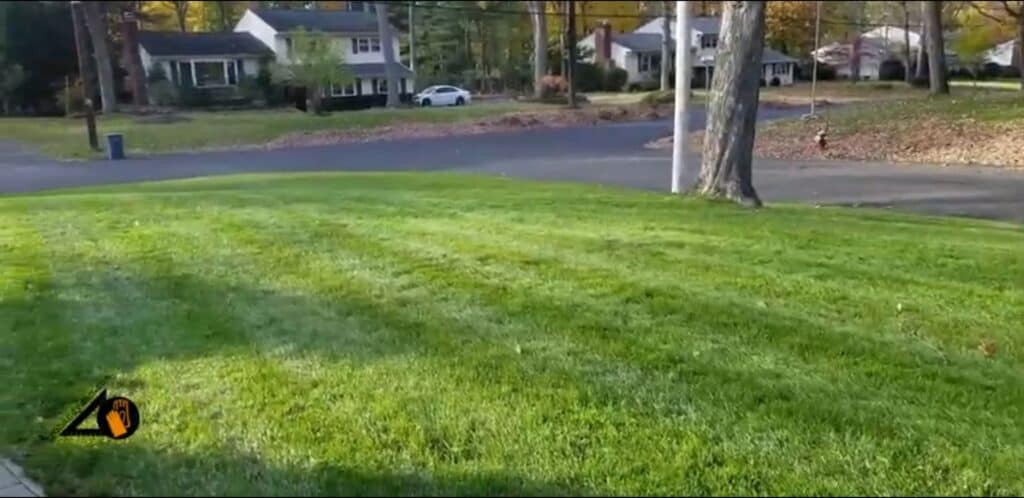
Having a great lawn when you don’t have a lot of money to spend will leave you wondering what to do and whom to listen to.
I have looked and listened to several guys on Youtube and all over the internet for years. They share some similarities and have differences in their opinions as well. It can be dizzying. It has been my experience that the best approach is…
Keep it Simple – Keep it Cheap
The most satisfying and least expensive way to maintain your lawn is to do it yourself
Frequently Asked Questions:
Is It Hard to Care For My Own Lawn?
Frankly, no, it isn’t. There is some time spent every week – anywhere from 30 minutes to 1 hour or so for the mowing and maybe 2 hours a year for fertilizing and the like. You will save money and you will gain pride in your accomplishments. These cherished things no landscaper can ever bring you.
How much should I budget for lawn care?
Landscapers will typically charge, conservatively, anywhere from $40 to $80 per week. If you figure 16 to 18 weeks of maintenance (less the Spring Clean UP and Fall Leaf clean up), this will end up costing between $640 for a smaller lawn to $848 for a larger lawn. Then there is fertilization and pest control which can vary but will cost somewhere near $70 to $100 per application. At, let’s say 5 applications, will total $350 to $500 a year. Add this to our “Mow and Blow” charges and we are up to around $800 for a small lawn and $1140 for a larger lawn.
If you were to do this yourself, expenses would be as follows…
- $300 for a lawn mower, if you don’t already have one.
- $250 for fertilizers and such – this is what I spent and my property is just shy of 1 acre. For you, it could certainly be even less.
- Up to $60 for a broadcast spreader, if you don’t already have one. If your lawn is smaller, some more appropriate models cost considerably less, depending on your need.
- There will be a gasoline and mower maintenance expense not covered here. It will be comparatively nominal.
All this ends up as a DIY expense of $550 for the year and, therefore, $185 savings for the first year and a $550 savings every year after – the mower and broadcast spreader essentially pay for themselves in the first year. In 5 years, you will have saved $2,385.00 and have the nicest lawn in your neighborhood to show as well.
How Do I Go About Caring For My Lawn?
If you follow the simple instructions I’ve provided below, you’ll have a better lawn than the neighbors even though he used a landscaper.
Before we start, it should be noted that lawn care is something of an art. This is to say that there will be a certain amount of patience required. Nature provides the proper times of the year in which we can perform proper maintenance and improvements. Some things will be done early; like the prevention of weeds, and other things that will be done late in the season; like planting new grass that we will be able to enjoy fully next season. With patience and vigilance, we will soon have the best lawn on the block.
Spring
- Acquire the necessary fertilizer(s) and pre-emergent
- Acquire any necessary equipment
- Broadcast Spreader
- De-thatcher of some type (if necessary)
- Plan your dates
- When to put down fertilizer and pre-emergent
Summer
- Mowing schedule
- Watering schedule
- Grub Treatment (June)
- Fertilization
Fall
- Plan fertilization
- When to seed and make repairs (very important for particularly distressed lawns)
- 2nd Grub treatment
Winter
- Last Fertilization – after last leaf pick-up (this is optional especially if you did so later in Fall)
For the sake of end-to-end presentation, I will assume that you are approaching your lawn starting in Spring. You can, however, begin anywhere, bearing in mind that if you have used pre-emergent either in the Fall, you will need to wait about 5 weeks to be able to plant new grass in the Fall. It is best to begin this regimen in Spring and carry it forward as an ongoing concern, year-top-year
What to do right now (Early Spring): Acquire the necessities:
I go to Home Depot for my lawn care needs for 2 reasons: convenience and value*. These two aspects may not be completely attributable to every category of products sold there but, I know that for lawn care, the Lesco products, Home Depot’s house brand, work very well and are the most inexpensive to use in the long run.
*It should be noted that during this time of Pandemic, Home Depot has an online ordering service where you can have your online order brought out to your vehicle for no extra charge.
Here is my annual shopping list:
 | Pre-Emergent: Lesco: There are several varieties of annual weeds, crabgrass being the most ubiquitous. These weeds do not come back every year. They drop their seeds every Summer and then die off when the weather turns cold in the Fall. The object is to keep these weed seeds, now waiting in the soil through Winter, from germinating in the Spring. This is where a pre-emergent comes in. They keep germination from occurring and thereby keep your lawn free from these ugly weeds. I like the Lesco product for its overall value. While its grains are bigger (which is not a good thing performance-wise), for the price paid, it does just as good a job. |
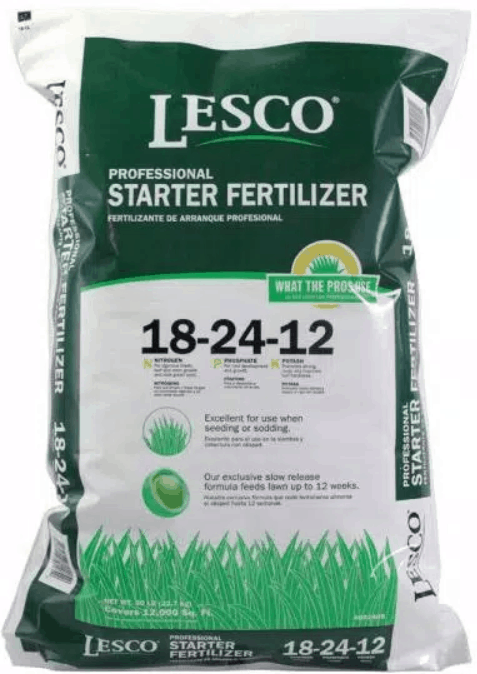 | Starter Fertilizer: Lesco: Once again, a great performer and excellent value. |
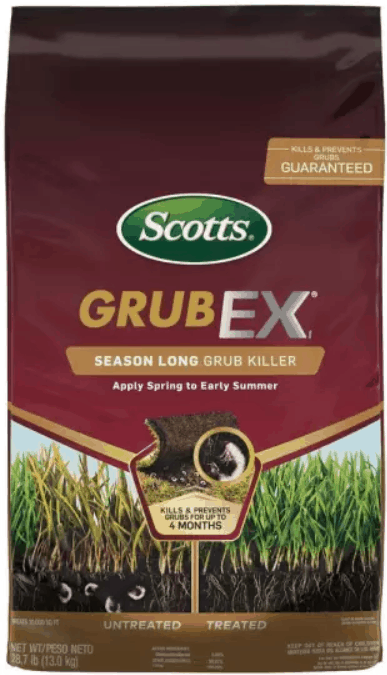 | Grub Control: I generally shy away from the Scotts brand. In this case, though, GrubEx is one of the only products in this class that is dedicated to grubs alone. Other bugs may be problematic for many reasons. For our purposes here, however, Grubex is the way to go because it focuses on the biggest scourge of lawn care, grubs. |
 | Milorganite: (Very popular organic fertilizer and therefore difficult to come by) This product is worth its weight in gold. It will keep your lawn green and soil healthy all season long. And, the best part of it is that, unlike most other products, you cannot overuse, and thereby burn out your lawn, with Milorganite. |
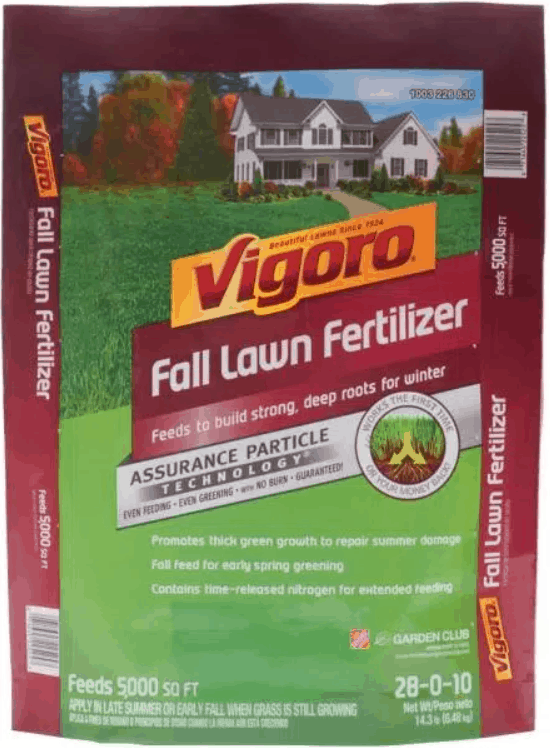 | Winterizing Fertilizer: This product may not be necessary to buy right away. I suggested it in this list as a means of saving a trip to the store. If it’s not in the budget right now, you can go and get this at the end of the season. Don’t wait too long though. As always, once Home Depot starts breaking out its Christmas decorations, you may have difficulty finding this product on its shelves. |
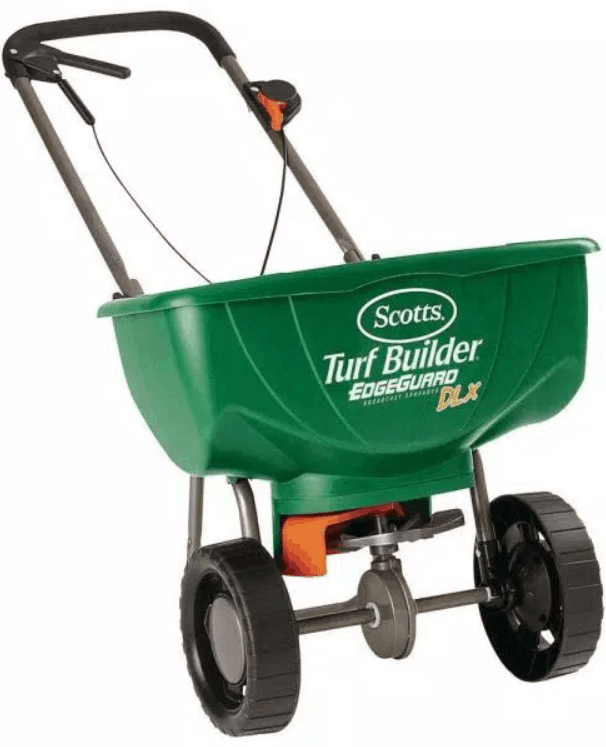 | Broadcast Spreader: I own this Scotts Broadcast Spreader. I like the EdgeGuard control and the spreader has good overall quality. Mine is several years old and still going strong. I have looked at the more recent models and I can say that I would rebuy the same in a heartbeat. Further, in most cases, the fertilizer companies tend to default to the Scotts broadcast spreader settings when it comes to application. Using this spreader makes it easier to reconcile the amounts to apply. |
For some of you, 50lb bags may seem excessive and you might be right. But, these do store easily and there will be that much more savings against next year’s fertilizer expenses.
I own this Scotts Broadcast Spreader. I like the EdgeGuard control and the spreader has good overall quality. Mine is several years old and still going strong. I have looked at the more recent models and I can say that I would rebuy the same in a heartbeat. Further, in most cases, the fertilizer companies tend to default to the Scotts broadcast spreader settings when it comes to application. Using this spreader makes it easier to reconcile the amounts to apply.
If you are new to using a broadcast spreader, Scotts has a very helpful video
A word about the importance of the Scotts EdgeGuard: In use, the EdgeGuard will keep excess product off of your garden beds and walkways, where they may harm. But, as well, the excess that will likely have to be dealt with after application with a broom or a leaf blower will have the tendency of becoming excessive in its placement on your lawn, causing burnout that will be difficult to fix later on.
Preparation:
Determine if it is necessary to dethatch your lawn in the Spring?
If you bag your grass during the growing seasons, you probably don’t need to do a full-on dethatching. I will always walk the lawn to see where problems are (thatch, weeds, bare spots). I recommend that you do the same; know the battlefield.
If you mulch your clippings, as a rule, there is the likely possibility that you will need to dethatch to have your fertilizers reach the soil. If this is your condition and you are not in a position to do the work yourself, this can be expensive. Renting or worse, hiring out will cost over $100/day on the rental and likely $150 for a service.
If you have a few to several spots and you can do the work, handling a dethatching rake at the least expensive approach, you can use to overcome the dethatching dilemma. This works well on small spots and smaller yards.
Going beyond a couple of hundred square yards is a lot of work, however. At this point, you may consider renting a machine or hiring a professional.
On the other end of the dethatching spectrum, I have used, and still do use, the John Deere 40” De-thatcher/Plug Aerator Combo attachment that is hitched onto the back of any lawn tractor. I have written about this tool. You can read the post here.
As suggested earlier, you will need a broadcast spreader. The Scotts broadcast spreader with EdgeGuard shown here is pretty much the homeowner standard. It does a great job and lasts for many years (a good investment).
When to Apply:
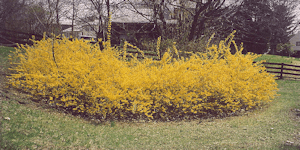
Spring
Before the soil temperature hits 50 degrees Fahrenheit or just before the Forsythia begins to bloom…
- Pre-emergent
- Starter Fertilizer
These two products can be applied together without worry. Both will need to be watered into the soil, 1 to 1 1/2″ of watering should do. See your sprinkler manufacturer for details on timing and amounts.
Summer
- Grub control – June and September in Sunny areas only
Have you ever seen your neighbor out there in the Summer heat putting something down with his spreader? This is what he’s doing. I have written another article about this very important subject. Read here.
Knowing what to do about grub control will save you from potential disappointment coming in the Fall. You can read about it here. This is the most overlooked aspect of DIY lawn care. Learn about it, know what to do about it and you will be happy.
This product will also need to be watered into the soil to be effective. It is, in fact, a soil treatment. I would recommend a good inch to an inch and a half of watering to be certain it has made its way down to the earth. That’s where the grubs live.
- Milorganite:
Milorganite, which can be used at any time, will add organic nutrients to the soil that the lawn will need in midsummer. The beauty of this product is that it will not burn out your lawn. Timing with those other products and the means of their application only serves to complicate things. Stick to Milorganite and all will be well.
- Water:
Watering your lawn regularly is very important and is from year to year a troublesome aspect of lawn care. Where I live, the rain is unpredictable and we have water restrictions all year long (yes even in New Jersey). These constraints will complicate things. Just stay on schedule and don’t miss that GrubEx treatment (grubs love the sun, and heat and will hide their damage as dried-out grass until the Fall green up when the heartbreaking damage they have done becomes evident.
Fall (Early):
- Grub control
I had written an in-depth article on this subject. You can see it here. The grubs have a life cycle. They populate and re-populate your soil from season to season. They are now and will be, present in the soil, even in Winter. The idea is to control their numbers. If you miss this application, your lawn will be okay. The damage will be minimal. Vigilance is the key, however, to grub control. If you were to consistently neglect this application, you will be left with a very unsightly lawn.
- Fertilizer with Nitrogen (Starter)
As mentioned, you have to be careful with starter fertilizer after Spring. Any nitrogen burn can be overcome with Spring growth but a little less so in the Fall.
- Seeding (for bare spots) and Overseeding (sewing into existing grass to help thicken the turf) – This was not included in this post. Applying seeds is not expensive. It will still leave your first year’s savings in the black. I will cover seeding in a follow-up post.
The Fall is the best time of year to do seeding. This is an important aspect of year-to-year maintenance. Seeding in the Fall will make certain that your lawn will be thick and luxurious, without bear spots or dead spots come Spring of next year.
Seeding your lawn is best done in the early Fall when the Summer temperatures have subsided to a more advantageous growing level. I will add an article that covers this all-important aspect later on.
Be sure to use plenty of seed as the deer and bird life will be very hungry in Fall.
Fall (Late) or Winter (after leaf pickup):
- Winterizing Fertilizer
This too, can be omitted. But, keeping the soil healthy is what lawn care is all about. If you can manage it, put this stuff down. Come Springtime, you’ll be happy you did.
A Word About Mowing (Important):
In the end, Keep your lawn at about 3” to 3 ½” long. When mowing, be certain that your blades are sharp. A dull blade will tear the ends of the grass blades and leave them yellowed from the shock. This will in turn make your lawn look pale. As well, alternate the mowing pattern so as not to leave track marks on your lawn.
At the end of the day, a lawn well cared for is its reward. There is little I like better than the gratifying back porch survey of my healthy, green-all-day lawn. If you follow the plan I have just laid out in this post, you too will be able to enjoy the same.
As time goes on you will naturally become much better versed in this subject. The more you put into your lawn, the better it will look. Patience is the key. It can take a while for a lawn to develop. But when it does, you will be the envy of the neighborhood.
Best of luck and good rain to you. You’ll be celebrating your accomplishments on the back porch before you know it.
Berk
